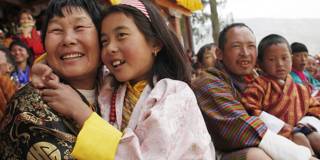
Is Gross National Happiness the Way Forward?
Decades after Bhutan introduced its Gross National Happiness index, the idea that GDP is an inadequate indicator of human well-being and social progress is gaining ground. But alternative metrics must be rendered globally tractable, and countries that are leading the way deserve support.
HONG KONG – While much of the world is fixated on the quest for GDP growth, wealth, and modernity, Bhutan – a landlocked kingdom with a tiny population squeezed between India and China – has chosen a different path, emphasizing human happiness and well-being. Does the Bhutan model hold the key to a prosperous, sustainable future for all?